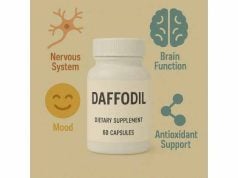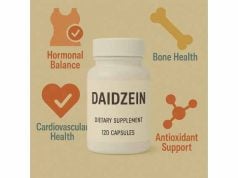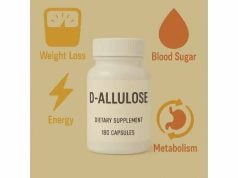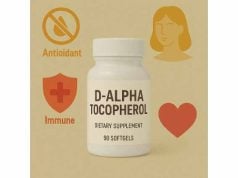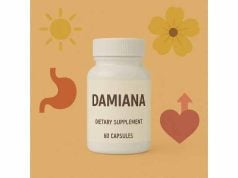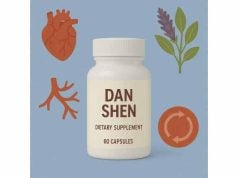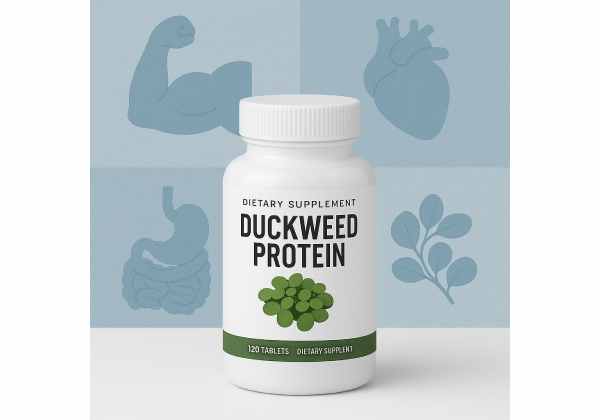
Duckweed protein—often labeled “water lentil” protein and sourced from tiny aquatic plants in the Lemnaceae family (e.g., Wolffia, Lemna)—is one of the fastest-growing plant proteins on the planet. It concentrates all nine essential amino acids, is naturally green from lutein and other pigments, and can be cultivated with far less land and water than many terrestrial crops. In human studies using whole Wolffia (“Mankai”) meals, duckweed-based shakes produced a favorable post-meal glycemic profile compared with common dairy comparators, and European regulators have assessed several forms of water-lentil foods for safety under specified conditions. This guide translates the science into practice: what duckweed protein is, how it compares nutritionally, smart ways to use it, evidence-aligned serving ranges, and who should avoid it or take extra care (for example, people needing to limit manganese). You will also find a quality checklist to help you choose dependable products in a fast-moving category.
Top Duckweed Protein Takeaways
- Complete, digestible protein with a balanced essential amino acid profile; human trials show favorable postprandial glucose responses.
- Typical supplemental range: 10–20 g protein per serving (≈15–30 g powder), once or twice daily with meals.
- Safety: cultivation and processing matter; manganese can run high in some Wolffia powders—choose tested products and moderate daily totals.
- Avoid or seek medical advice if you require manganese restriction, have significant kidney or liver disease, or are prone to oxalate kidney stones.
Table of Contents
- What is duckweed protein and why it matters
- Proven and promising benefits
- How to use duckweed protein in meals
- How much duckweed protein per day
- Side effects, allergens, and who should avoid
- What to look for in quality and evidence summary
What is duckweed protein and why it matters
Duckweeds (also called water lentils) are tiny, free-floating aquatic plants—chiefly Wolffia, Lemna, Landoltia, Wolffiella, and Spirodela. Among them, Wolffia globosa (often marketed as “Mankai”) and Lemna species are the best studied for food use. When cultivated in clean, controlled ponds, the whole plant can contain 35–45% protein (dry weight), along with fiber, minerals, and carotenoids (notably lutein).
Commercial duckweed protein appears in three broad formats:
- Whole, dried plant (powder or pellets): minimally processed; protein content and mineral levels reflect cultivation conditions.
- Protein concentrate (from Lemna spp.): higher protein percentage with some fibers and pigments removed; designed for beverages, bars, or blended flours.
- Ready-to-eat fresh plant (e.g., Wolffia sold as a leafy “micro-vegetable”): used in smoothies, soups, or bowls.
Nutritionally, duckweed protein is compelling because it is complete (contains all essential amino acids) and shows good digestibility when properly processed. Regulatory reviews in the EU have compared water-lentil protein quality to soy and examined safety under specified uses. Equally important is its sustainability profile: duckweed can double its biomass in days, thrives in closed-loop aquaculture systems, and allows year-round harvesting close to where people live.
A practical distinction: duckweed protein is not identical to algae proteins (e.g., spirulina), which are cyanobacteria with different cell wall features and micronutrient profiles. Nor is it the same as pea or rice proteins that can be limited in certain amino acids. For consumers seeking a green, mild-tasting, and more circular protein input, duckweed is an option with growing human data—especially around post-meal glucose.
Key points
- “Duckweed” and “water lentil” are umbrella terms; labels should specify genus/species (e.g., Wolffia globosa, Lemna minor) and whether the ingredient is whole plant or protein concentrate.
- Expect naturally green color and a mild, grassy flavor; clean products mix smoothly and work well in savory or fruity recipes.
- Safety and nutrition depend on cultivation water quality, harvest/processing, and third-party testing—be selective.
Proven and promising benefits
1) Favorable post-meal glycemic profile (human trials)
In randomized crossover work with healthy adults, a whole-plant Wolffia shake produced lower early postprandial glucose and reduced late-night glucose versus an isocaloric, protein-matched dairy comparator. Additional investigations, including newer crossover designs in people with type 2 diabetes, report meaningful reductions in postprandial glucose excursions when duckweed is swapped into standardized meals. These findings suggest duckweed’s matrix—protein, fiber, and viscosity—can slow carbohydrate absorption and smooth glucose curves when used as part of a mixed meal.
2) Complete amino acid profile with good digestibility
Duckweed’s essential amino acids (EAAs) are well balanced for a plant source, with notable lysine and branched-chain amino acids. Regulatory evaluations of water-lentil protein concentrates have reported protein digestibility-corrected amino acid scores (PDCAAS) near soy isolate, meaning it can serve as a primary protein in mixed plant-based diets. Human postprandial studies also show efficient aminoacidemia (rise in bloodstream amino acids) after duckweed meals, aligning with adequate digestion and absorption.
3) Micronutrients and pigments
Whole duckweed brings lutein and other carotenoids that contribute to eye-friendly dietary patterns, plus iron and folate in amounts that vary by cultivation. While marketing sometimes highlights vitamin B12, contents and forms differ by species and growing media; use duckweed as a protein and lutein source first, not as your only B12 strategy.
4) Sustainability and formulation flexibility
Beyond individual health, duckweed offers systems benefits: rapid growth, potential for closed-loop nutrient recovery, and compatibility with indoor or peri-urban farms. For cooks and formulators, it can replace part of flour in baked goods, boost protein in smoothies without gritty textures, or add green color and mild body to soups and sauces.
5) Emerging areas (needs more evidence)
Preclinical work explores bioactive peptides from duckweed hydrolysates with potential angiotensin-converting enzyme (ACE)-modulating activity and anti-oxidative effects, and food-tech studies are improving extraction to preserve functionality. These signals are promising, but clinical endpoints (e.g., blood pressure change from duckweed peptide supplements) remain to be shown.
What not to expect
Duckweed protein is not a drug, does not replace glucose-lowering medications, and does not “detox” the body. Its strongest outcomes today are meal-level effects on glucose curves and diet-level benefits from providing complete plant protein in a sustainable package.
How to use duckweed protein in meals
Pick the right format for your goal
- Protein concentrate (smoothest mouthfeel): Choose when you want 10–20 g protein per serving with minimal flavor impact. Ideal for smoothies, oats, and pancakes.
- Whole-plant powder (more micronutrients/fiber): Good for smoothies, soups, savory batters, and “green” flatbreads. Expect a slightly vegetal note and thicker texture.
- Fresh Wolffia (micro-vegetable): Add to salads, omelets, or soups like a tender herb; think of it as a protein-rich leafy green.
Practical recipes (frameworks you can scale)
- Green protein shake (≈20 g protein): 2 scoops duckweed protein concentrate (≈25–30 g powder), 250 mL milk or fortified plant milk, ½ banana, squeeze of lime, optional ice.
- Savory oat bowl (≈15 g protein): 40 g oats, 1 scoop duckweed concentrate (≈12–15 g protein), hot vegetable broth to hydrate, stir in spinach and chili oil.
- Pancake/crepe batter: Replace 20–30% of flour with duckweed powder; add an extra splash of liquid to keep the batter pourable.
- Soup finish: Whisk 1–2 tablespoons whole-plant powder into hot blended soups off the heat to preserve color and minimize “green” aroma.
Absorption tips
- Combine with a carbohydrate source (fruit or oats) and some fat (nuts, dairy, olive oil) for balanced energy and texture.
- If you are protein-splitting during the day, aim for 25–40 g total protein per main meal; duckweed can supply 10–20 g of that conveniently.
Stacking with other proteins
- Pair duckweed with soy, dairy, or legume proteins to diversify amino acid sources and culinary textures.
- For baking, blending duckweed with oat or wheat flours can reduce crumb dryness and boost protein without excessive green color.
Flavor management
- Brighten vegetal notes with acid (lemon, yogurt), aromatics (ginger, scallion), or spices (cumin, coriander).
- For sweet blends, cocoa, vanilla, and frozen berries temper “green” flavors well.
Storage and handling
- Keep powders sealed and dry, away from heat and light. Use by the best-by date. For fresh Wolffia, refrigerate and use within a few days.
How much duckweed protein per day
There is no single “right” amount; match intake to your protein goals, tolerance, and the specific product.
Everyday ranges (adults)
- Per serving: 10–20 g protein from duckweed (≈ 15–30 g powder depending on concentration).
- Per day: 10–40 g duckweed-derived protein split across meals, as part of your total daily protein target (e.g., 1.2–2.0 g/kg/day for active adults; individualized targets for others).
- For meal replacement shakes: Keep within 300–450 kcal total, including carbs and fats; duckweed provides the protein component.
Special contexts
- Glucose-aware eating: Use duckweed protein to replace refined carbohydrates or to anchor a higher-fiber smoothie; assess your post-meal response with a meter/CGM if you track.
- Vegetarian/vegan diets: Duckweed can supply complete EAAs and compliments legumes and grains for variety.
- Older adults (anabolic resistance): Target 25–35 g total protein per meal, with 2–3 g leucine; duckweed helps hit totals but check the blend’s leucine content and pair with other sources if needed.
When to adjust downward
- If your product is a whole Wolffia powder with notable manganese, keep portions modest (for example, one scoop/day) unless the label shows low manganese content verified by testing.
- If you have kidney disease or a clinician-directed protein restriction, integrate duckweed only within your prescribed daily limit.
How to read labels
- Protein concentrate: Look for ≥60% protein by weight with batch-level assays.
- Whole plant: Expect 30–45% protein and variable minerals (iron, manganese). Prefer brands publishing third-party certificates and heavy-metal results.
- Serving math: If a scoop lists 25 g powder at 70% protein, that scoop provides 17.5 g protein.
Trial plan
- Start with one serving/day for 3–7 days to confirm tolerance.
- Increase to two servings on training days if beneficial, or keep one serving as a versatile pantry tool for busy meals.
Side effects, allergens, and who should avoid
Common, usually mild
- GI changes (bloating, softer stools) when increasing fiber/protein rapidly—titrate up, hydrate, and pair with meals.
- Taste/aftertaste in very green blends; adjust with citrus or spices.
Allergy and cross-reactivity
- Duckweed is botanically distinct from soy, pea, and tree nuts; true allergy appears rare. That said, any novel protein can be allergenic. If you experience hives, wheeze, or swelling, stop and seek care. Products made in shared facilities may carry allergen cross-contact advisories—check labels.
Minerals: manganese watch
- Regulatory reviews of Wolffia globosa powders have flagged that manganese can be relatively high in some batches. Excess intake is undesirable, particularly for people with liver disease, iron deficiency (manganese competes with iron transport), or neurological conditions sensitive to manganese overload. Prefer tested products with disclosed manganese levels and avoid stacking multiple high-manganese foods/supplements.
Kidney and stone formers
- Whole-plant green powders can provide oxalate; if you have a history of calcium-oxalate kidney stones, discuss duckweed powders with your clinician and emphasize calcium-with-meals strategies to bind oxalate in the gut.
Drug and condition considerations
- Diabetes therapies: Duckweed can blunt post-meal glucose rises in the context of a mixed meal. Monitor for lower-than-expected readings if you use insulin or sulfonylureas and are making significant meal changes.
- Bile-acid sequestrants or fat-absorption issues: May alter uptake of carotenoids present in whole-plant powders; this is rarely clinically significant for protein purposes.
Who should avoid or get clearance first
- Individuals with manganese-restricted diets, moderate-to-severe liver or kidney disease, or unexplained GI symptoms.
- Pregnant or breastfeeding individuals should use food-first strategies; introduce new green powders only with clinician guidance.
- Children: Whole foods are preferred; if used, choose food-like forms (fresh Wolffia in meals) and avoid concentrated powders unless a pediatric dietitian approves.
Quality-related risks
- Duckweed can accumulate metals from water; this is why source control and batch testing are non-negotiable. Avoid unverified imports and seek brands that publish microbial, heavy metal, and mineral results.
What to look for in quality and evidence summary
Quality checklist (buy with confidence)
- Clear species and part: e.g., Wolffia globosa whole plant, or Lemna minor protein concentrate.
- Assays on label: protein %, serving protein grams, and—if whole plant—manganese and iron per serving.
- Third-party testing: microbiology, heavy metals (Pb, Cd, Hg, As), and mineral panel; ask for a certificate of analysis by lot.
- Sourcing transparency: controlled aquaculture with clean water, documented HACCP and cGMP practices.
- Functionality: mixes smoothly, minimal sediment; if gritty or strongly fishy/pond-like, question quality.
How the evidence stacks up (concise view)
- Human efficacy (meal level): Crossover trials show lower post-meal glucose with duckweed meals versus dairy or other plant comparators—most robust with Wolffia whole-plant shakes.
- Protein quality: Regulatory scientific opinions characterize protein quality near soy for some water-lentil concentrates and support their safety under proposed uses.
- Safety: EU authorizations exist for fresh Wolffia plants as a traditional food, and scientific opinions cover powders and protein concentrates. Main caution: manganese intake from some powders.
- Gaps: Long-term outcomes (e.g., body composition, lipid changes, iron/B12 status) need larger randomized trials; peptide-level bioactivities are still preclinical.
Practical bottom line
- Choose a tested, transparent product, start with one serving daily, and use duckweed protein to replace (not add to) lower-quality calories. If you track glucose, evaluate your own meal responses. If you have manganese limits or kidney/liver issues, use only with clinician input.
References
- The Effect of Wolffia globosa Mankai, a Green Aquatic Plant, on Postprandial Glycemic Response: A Randomized Crossover Controlled Trial 2019 (RCT)
- Safety of Wolffia globosa powder as a Novel food pursuant to Regulation (EU) 2015/2283 2021 (Regulatory scientific opinion)
- Safety of water lentil protein concentrate from a mixture of Lemna gibba and Lemna minor as a Novel food pursuant to Regulation (EU) 2015/2283 2023 (Regulatory scientific opinion)
- Postprandial amino acid, glucose and insulin responses of Lemna minor and green peas in healthy adults: a randomised cross-over trial 2019 (Human crossover trial)
- Commission Implementing Regulation (EU) 2021/2191 of 13 December 2021 authorising the placing on the market of fresh plants of Wolffia arrhiza and/or Wolffia globosa as a traditional food 2021 (Regulatory authorization)
Disclaimer
This article is for educational purposes and does not replace professional medical advice, diagnosis, or treatment. Duckweed protein can be part of a balanced diet, but individual needs vary—especially for people with diabetes, kidney or liver disease, pregnancy, or mineral restrictions. Consult a qualified health professional before making significant changes to your nutrition or supplement routine. If you experience allergic symptoms or persistent gastrointestinal issues, discontinue use and seek medical care.
If this guide was helpful, please consider sharing it on Facebook, X (formerly Twitter), or your preferred platform, and follow us for more evidence-based nutrition explainers. Your support helps us continue producing high-quality content.

